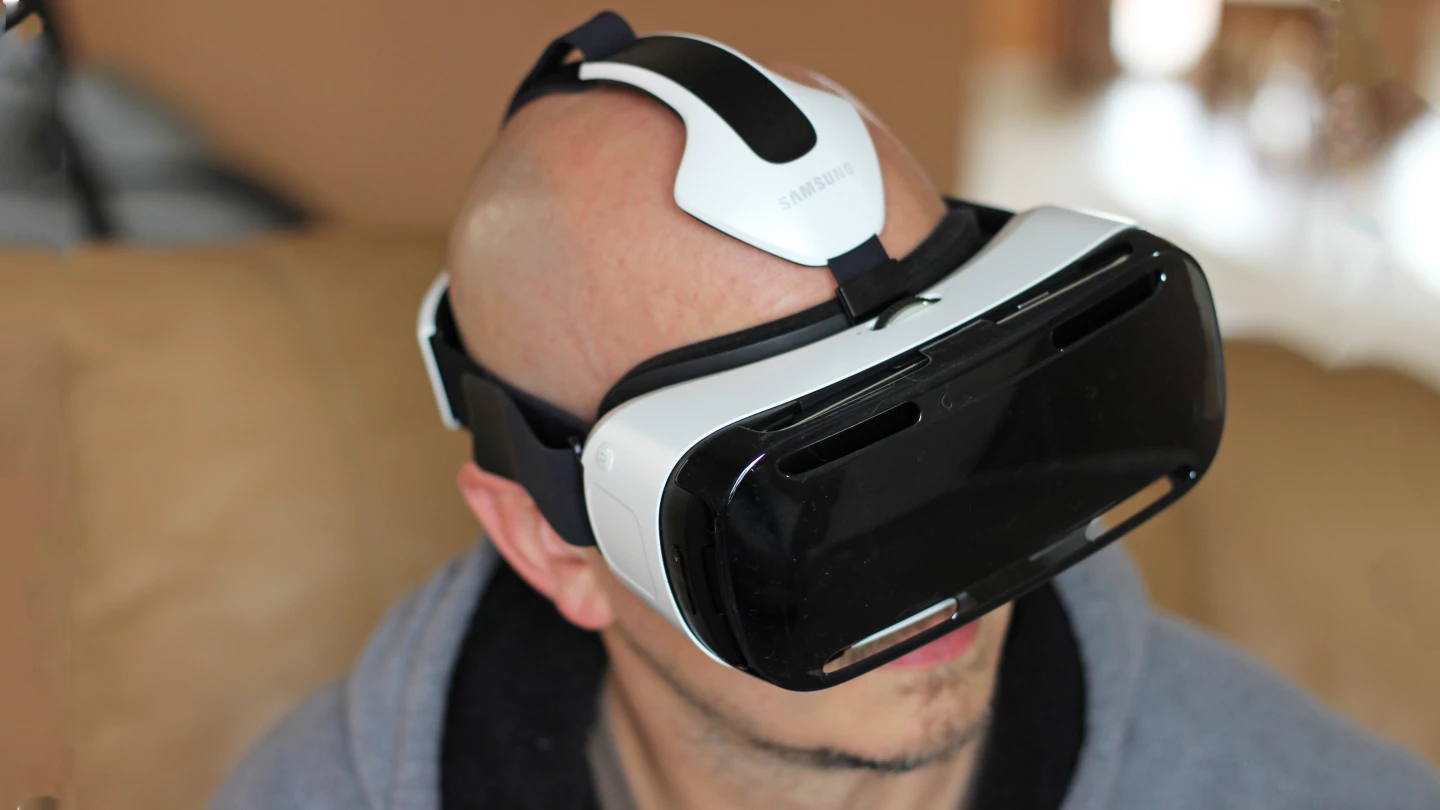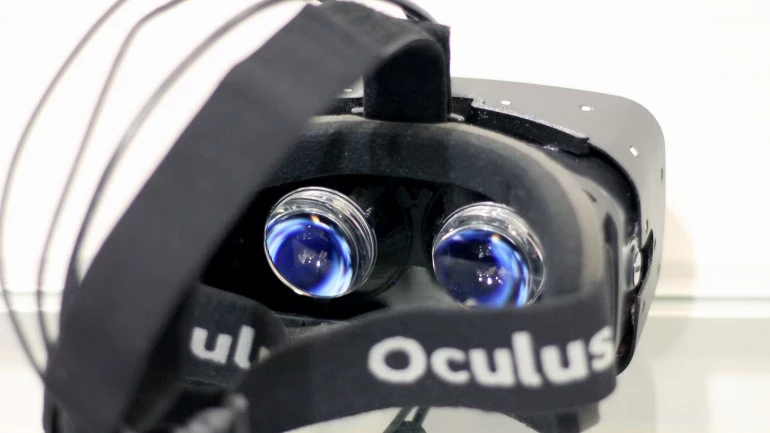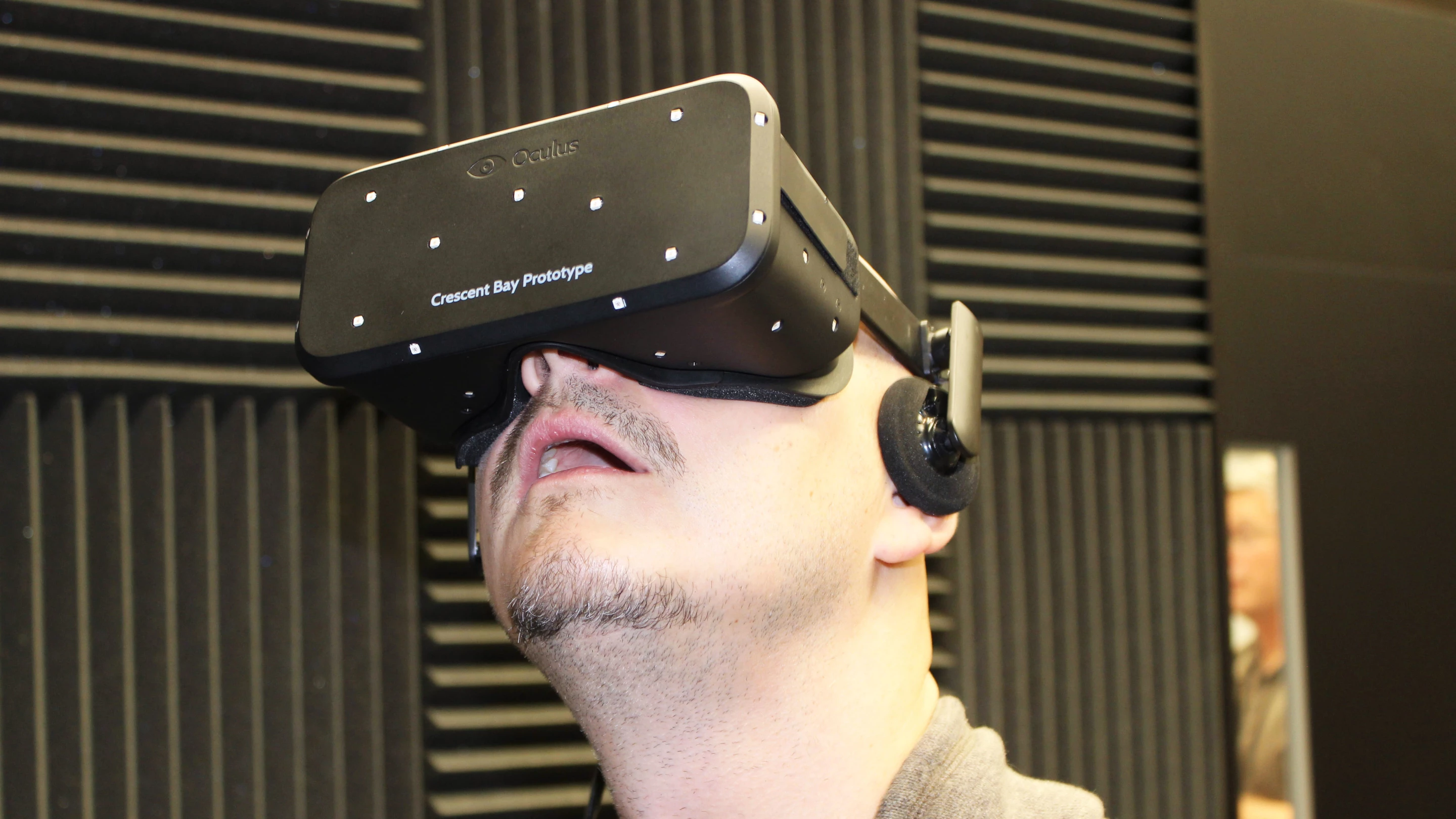Virtual reality may not be quite ready for mass consumption, but it is looming on the horizon. And after jamming our eyeballs into the equally mesmerizing Oculus Rift DK2 and Samsung Gear VR (and some brief time with the latest Oculus Rift prototype), we have a few thoughts on how this next big thing could play out.
Playing a role inside a 3D hologram

If you haven't tried the Oculus Rift or Gear VR yet, our best description of the experience is "playing a role inside of a 3D hologram." Have you ever seen video game commercials where stereotypical gamer types literally step into the latest AAA console games? Ironically, the games those ads are hawking are nothing like that, but virtual reality is. It tricks your brain into making you feel like you're really inside of the game or video.
During the last decade or so, video games – including many PC titles – have basically turned into Michael Bay films. High-pitched action, emotional cutscenes, over-the-top battle sequences and end-of-the-world stakes are all par for the course. But if you're of a certain age, you'll remember an era when PC games were more about thoughtful, intelligent and slower-paced strategy. Adventure games, simulations and real-time strategy ... these were some of the hallmarks of 80s and 90s PC gaming. And interestingly, these are some of the same genres that work well in VR.
Because virtual reality is so immersive, developers don't need to shout so loudly or flash so brightly to hold gamers' attention. VR games only need to drop you into a virtual world and give you some simple tasks to accomplish. When done well, that somehow translates into an exhilarating experience.
We still expect to see AAA action-fests in VR – and they could be terrific too – but we believe the medium is also going to resurrect some of these older, more exploratory and sim-related genres.

For example, our favorite game right now on the Oculus Rift DK2 is Elite: Dangerous, a franchise that rose from the ashes of 90s PC gaming. Before you experience in-game battle, you might spend your first few days just running through the game's tutorials and learning how to fly your ship. There are no cinematic cutscenes, and simple tasks like jumping to light speed or docking your ship (which would be either mapped to a single button or thrown into a cutscene in any other modern game) are downright tricky – and realistic to a T.
This might sound incredibly boring by today's standards, but in the Oculus Rift, it's simply incredible. Why? Because you aren't playing a game. You're playing the role of space pilot inside of a 3D Milky Way. So the more lifelike your tasks, the more you feel like you're really walking in those shoes.
Another example: Euro Truck Simulator 2. Your goal isn't to save the world, rise to power or avert nuclear holocaust. Nope, your goal is to – wait for it – drive a semi. That's it. Just drive your rig and try to make money to buy better trucks ... so you can do more truck-driving.
It sounds about as exciting as watching a Yanni concert on PBS, but in the world of VR it's more engaging than you might expect. Why? Because you aren't just playing a boring trucker sim. You are a truck driver, making your living inside of a virtual European countryside.

We think this new frontier is a good thing. New mediums like VR can be a great breeding ground for imaginative and unexpected new content, and can also open the door to unexpected players – like Oculus VR – shaking up the status quo.
There's also another big factor that AAA-style games will have to deal with: VR games that have lots of quick or jerky movement (like you'd find in every single first-person shooter) can make you feel queasy. We think this potential for motion sickness is going to lead to a rise of these slower-paced genres, but it could also spawn action games that use crutches like cockpits (which can help stabilize your perception of movement) and perhaps slow-motion, Max Payne-style action sequences.
Without these crutches, VR gamers might need to keep barf bags at their sides for the non-stop action titles.
Don't discount the Gear VR

It's a bit silly to compare a developers' kit (Oculus Rift DK2) to a consumer product (Gear VR), but what we see right now is that the Gear VR is much more than a watered-down side project. In fact, it has a few key advantages over the Oculus Rift.
Most importantly, it's completely wireless. This allows for exploring environments without moving the in-game camera (which can break the illusion of being somewhere else). On the wireless Gear VR, you can play in a swiveling office chair, and when you rotate, your virtual perspective also rotates. Do that too much on the DK2, and the wires might yank your PC clean off your desk.
Of course the Rift will probably be wireless at some point too, but it's uncertain whether Oculus VR will be able to get to that point by the time the consumer Rift launches (possibly this year).

Also don't forget that the Gear VR doesn't have the fragmentation that can exist in the PC gaming world. Developers need to tailor PC games to run on a wide variety of systems, and PCs therefore require gamers to tweak advanced settings to find just the right optimization for their systems. This is second nature if you're a hardcore PC gamer, but don't underestimate how daunting this can all be for the uninitiated.
Right now Gear VR developers only have one piece of hardware, the Galaxy Note 4, to contend with, so everything should work perfectly on every device. And even if Samsung eventually makes Gear headsets that work with multiple Samsung flagships, that's still a pretty small pool to worry about.
In the long run, Oculus VR sees this as a game of lead/follow. The first consumer Oculus Rift (CV1) should be the best VR headset around, but the Gear VR (including future versions) could be trailing close behind. Considering how expensive a gaming rig can be, and how comparatively complex the PC gaming world can be, consumers could potentially gravitate towards the simplicity of 1) pop phone into headset, 2) enjoy.
On the other hand ...

Make no mistake, though: the Oculus Rift is going to be the big dog in this pack. Of course it will be much more powerful, as there's simply no comparison between a high-end gaming PC and a smartphone. It also has a huge advantage in longer gaming sessions. Even if Samsung eventually solves the Gear's overheating problems (if you don't use a fan, you might not last 20 minutes in some games), there's still battery life to think about.
Let's say a half-hour Gear VR gaming session hacks about 15-20 percent off of your Note 4's battery life. If this were a dedicated gaming console, that wouldn't be too big of a deal. But remember that this doubles as your smartphone. Unless you sit near power outlets all day long, your Gear VR sessions are going to be limited by overheating, battery life or both.

Another big advantage for the Rift is its positional tracking. A camera sits in front of you, and tracks your head and upper body movement. When you lean in with your body, you lean in in your virtual environment. So in, say, Elite: Dangerous, you can get a closer peek at your cockpit's controls, and in BlazeRush you can check out the tiny cars racing around you. It adds loads to the experience, and the Gear VR doesn't have it.
What we'll likely see is the PC-based Oculus Rift and mobile-based Gear VR falling into familiar roles. Deeper, longer and more graphically-intensive games on the PC, contrasted with lighter and shorter pick-up-and-play fare on mobile. In between will sit some console-esque games and immersive 360-degree videos that tie both platforms together.
Horror in VR is ... horrifying

I'm usually 100 percent disinterested in the horror genre. I don't seek out opportunities to get scared, and when I do end up watching horror flicks, TVs allow for a certain separation. They make it easier to distance yourself, make fun of it, and predict the next big scare before it happens.
But in VR, horror experiences can be terrifying. Dreadhalls, a demo which is available for both the DK2 and Gear VR, has us screaming every time we play it. For the first 15-20 minutes it builds an investment in the world, as you explore dungeons, collect items and unlock doors. But once you finally encounter the demon beasts that are roaming the halls, you're already immersed in the world and ... well, you might want to make sure you're wearing some adult diapers.
If you're into horror, VR is going to succeed at the genre much better than the latest Hollywood scarefest ever could.
The Rift will need a pretty serious gaming rig

We've been testing the Oculus Rift DK2 with a custom-built PC powered by an Nvidia GTX 980, a ~US$600 graphics card that should be able to handle just about any modern PC game (at least with a single-monitor setup) on "ultra" settings. But in the world of VR, even this card requires us to turn down graphics settings for plenty of games – and that's on the lower-resolution (1080p) DK2.
Part of this can be attributed to the fact that we're playing pre-release demos and consumer titles that included Oculus support as little more than an add-on. The Rift's launch titles could (perhaps should) be better optimized.
But another factor is that Oculus DK2 games are running on the equivalent of two 960 x 1,080 monitors – and the consumer version is going to crank that up even higher.

Assuming the CV1 uses a Quad HD panel (still unconfirmed), you'll need a card that can not only handle the graphical demands of two 1,280 x 1,440 monitors at the same time – but can do so at a 90 frames per second clip as a bare minimum. High frame rates are important on any gaming platform, but in the world of VR, they're a necessity. A minor hiccup or jitter that might go unnoticed on a monitor or TV could be all it takes to shatter VR's illusion of "being somewhere else."
It's a tall order, and one that will likely have Nvidia and AMD scrambling to optimize their future cards for VR's increasing demands.
Oculus VR does tell us that today's most powerful cards (like that GTX 980) will be good to go with the consumer Rift. Just don't be shocked if these cards only run the most advanced titles on, say, "medium" settings on CK1 launch day.
Third-person perspectives are surprisingly great

When you think about Oculus Rift launch titles, you might picture the latest first-person shooter, be it Call of Duty, Battlefield or Titanfall. But third-person action can also work surprisingly well in the medium.
The Gear VR game Herobound is a great example. It's a console-style hack-and slash/exploration game, not completely unlike a Zelda title. We love it. Ditto for another Gear demo, Ikarus, as well as an unnamed tower defense game that we played at our Oculus meeting at CES 2014.
In these third-person titles, though you miss out on the sensation of becoming the protagonist, you still exist in the world: as a sort of non-physical entity watching over the character, controlling his movements. A guiding spirit, if you will. Playing this god-like role might be just as much fun as a first-person perspective.
Unofficially supported games: soaring high and falling flat

There are a couple of Windows drivers (like Vorpx and Vireio) that let you play older, non-VR games in the Oculus Rift: titles like Skyrim, Portal and the Batman: Arkham series. When they work, they work brilliantly – and are enough to have us salivating for future Oculus-tailored titles. But, as you might expect, they're far too inconsistent to provide a great experience. VR has very specific requirements, and if games aren't built from the ground up for it, there's simply going to be compromise.
The motion sickness that comes from quick movement is a big part of that (like in Half Life 2 or Portal 2). But menu navigation and cutscenes are also clunky, often cutting off key information and suddenly shifting from a virtual (head-tracking) perspective to a static one. On the whole it kinda works, but feels like a bit like you're testing beta products (which is exactly what non-developer DK2 owners are doing).
This is part of the reason that Oculus recommends consumers hold off on buying the developer kit and wait for the commercial Oculus Rift. And if you're really antsy, and don't mind using the Galaxy Note 4 as your phone, the Gear VR is a more consumer-ready way of getting a peek at that future right now.

If you've used either of the Oculus headsets, drop us a line in the comments to let us know how you see all of this playing out.
For more on Oculus, you can read Gizmag's review of the Gear VR, our hands-on with the 'Crescent Bay' prototype and our thoughts on how the Rift could transcend gaming.










